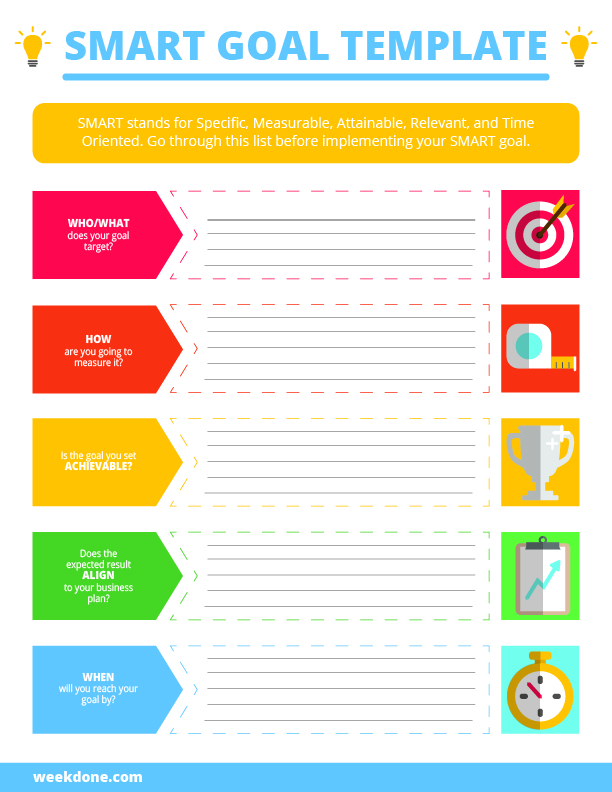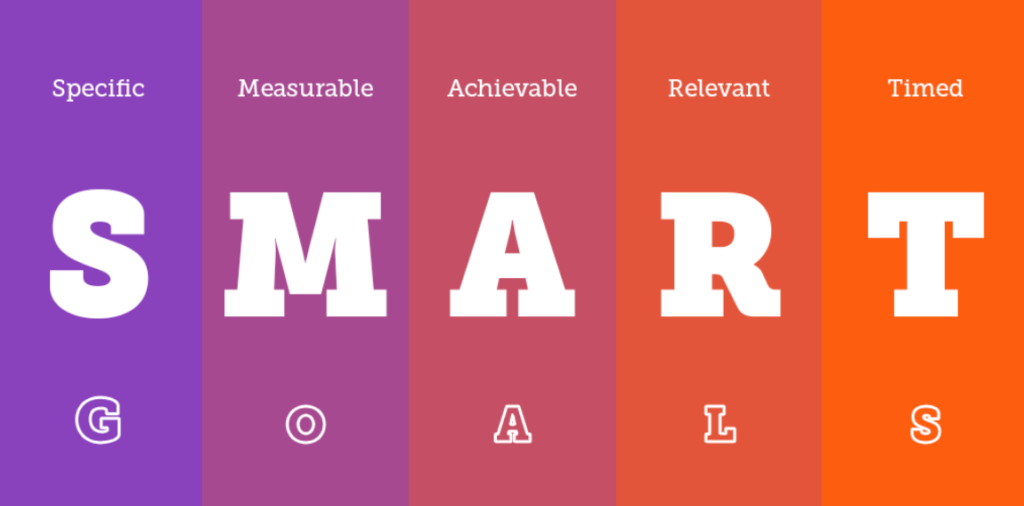This resource is provided by Team Compass – world leading SMART goals software since 2011.
Quick Link: Jump to our downloadable SMART Goals Template here.
A recent study suggests that people who set and pursue audacious and achievable goals are 34% more likely to love their jobs.
Goal setting is a fun exercise but is difficult, especially if they must be SMART. The SMART goal model is a well-established system and includes the goal-setting framework of OKRs (Objectives and Key Results). It allows you to verify the credibility of any business objective and is a popular method used in best-in-class companies to write smart goals that are clear, aspirational, and achievable. SMART goals are automated in special software like Team Compass.
The best way to implement and keep track of goals successfully is, to begin with, writing them down. Better yet, try SMART goals software to set and track them.You can use a SMART goals template to get started, but it would be useful to learn the basics of SMART goals. Get a better understanding of what it means to create a SMART goal that is Specific, Measurable, Attainable, Relevant, and Time-Oriented, and how you can create them.
Get Started with a SMART Goals Template
Access this editable and printable smart goals worksheet

1. SPECIFIC
This section of the smart goals worksheet focuses on the questions of WHO/WHAT. Here you add details such as your target market, market research, buyer personas, the traffic and revenue to be generated, the channels to use, and initiatives to be completed related to achieving these marketing goals.
Example:
In this section you can add details such as your target market, market research, buyer personas, the traffic and revenue to be generated, the channels to use, and initiatives to be completed related to achieving these marketing goals.So, instead of a generic goal such as increasing market share, your specific goal would be to increase market share by 20% in the United States for the new pro features of our site.
2: MEASURABLE
This section of the SMART goals template focuses on the question of HOW you are going to obtain your goal. To understand if your goals are achievable and to set future standards of success, it is important to measure them.
If you have already defined your goal specifically, then measuring it should be second nature. The step of measurement is to ensure that you set a goal that is good from the beginning of the process.
Example:
Referring to the market share example above – by adding a metric – it makes the goal measurable. You will increase market share by 20%, or you will not. You can measure your progress as well and add it into a goal-setting software that measures results.
3. ATTAINABLE
This is an easy step in your SMART goal template. The key is to make sure your goal is achievable within a predefined time limit. It is acceptable if you do not hit every aspect of your goal, but not reaching the goal at all means you need to evaluate what makes a goal possible.
Example:
You may want to look back on past goals to determine goal attainability. You need to check that your metrics are achievable. For instance, increasing market share by 100% in a quarter is too ambitious compared to 20%, which is achievable. If you do not reach your goal in time using a similar structured goal, you can change the metrics to improve your success rate.
4. RELEVANT
Alignment is a tricky topic to deal with, but it is key in ensuring your company remains focused. When setting goals, whether at the company or personal level, make sure it aligns with the greater vision of the company – to give meaning and direction to everyone’s day-to-day work. No matter how small the goal or initiative is, if you are setting it as a goal or initiative, it should align with larger company objectives on your SMART goal template.
Example:
This category deals with alignment. You need to ensure that your goal aligns with your company objectives. A goal must be aligned with what your company wants to accomplish. So, if you want to increase market share, it is easy to tie that goal into any company aspiration related to growth.
5. TIME-ORIENTED
This section of the smart goals worksheet focuses on the WHEN. You need to set deadlines for your goals, or you will procrastinate or get rid of them. There are typically four time-bound goal levels – lifetime goals, long-term goals, short-term goals, and stepping-stone goals (goals to accomplish other goals). Lifetime goals are set sparingly and usually do not have a time limit. The timelines for other goals could be – long-term (5-10 years), short-term (a month to a year), and stepping stone goals (weekly or more).
Example:
Every goal you set must have a deadline. For example, if you set your goal to increase market share growth by 20%, it must include by when, such as by the end of Q4.
Want to test how SMART are your objectives? Answer a few simple questions and get tips for improvement.
Creating SMART Goals Is Just the Beginning
It is easy to create SMART goals, but they can be as easily misunderstood and misinterpreted, thereby making them ineffective. Using SMART goal-setting software such as Team Compass is one of the best ways to succeed and achieve your goals.
Using the smart goals worksheet, you can easily set inspirational quarterly goals and objectives at the company and team level. By using the methodical approach of an OKR you can assign Key Results with an Objective and add specific metrics to ensure you accomplish your goals.
When you set your company goals as OKRs, add plans and initiatives to achieve them, and continue tracking the progress, you can build a roadmap to success.
Team Compass is special SMART goals software that implements annual, quarterly, weekly and due date goals. It provides you with a visual goal progress tracking and reporting software for teams and employees. It’s free for small teams. Try it out here.

